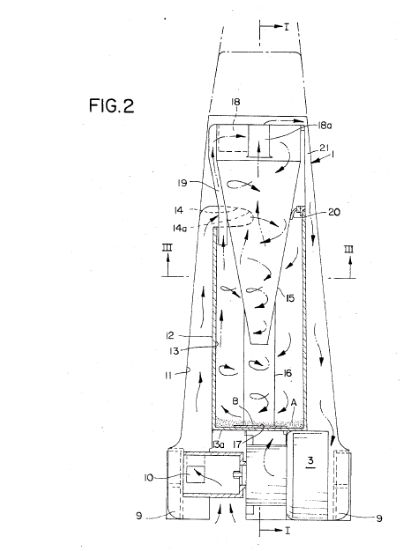As Haseltine Lake celebrates 40 years in Munich (1978 - 2018), we take a look at a few interesting inventions that are just as old!
Digital Cameras
As the name suggests, digital cameras allow images to be captured in digital memory, as opposed to on a physical photographic film. In December 1975, a prototype of a self-contained digital camera was first produced by Steven Sassan (an engineer employed by Eastman Kodak). The prototype utilised a charge-coupled device (CCD) in order to detect the image, and with 0.01 megapixels, the prototype was able to record a single black-and-white image to a cassette tape in 23 seconds.
U.S. Patent 4,131,919, "Electronic Still Camera", granted in 1978, features the technology of this prototype. The patent describes a magnetic-tape used to record the image, and a camera employing a CCD, featuring "an array of photosensitive elements, which form a charge pattern," corresponding to the image projected onto them.

This first prototype paved the way for the everyday use of digital cameras, from high-resolution DSLRs enabling the capture of high quality professional images, to the camera components featured in smartphones. Without this prototype, "the world's most powerful digital camera," The Large Synoptic Survey Telescope (LSST), which is currently under construction, may have never existed. With 3,200 megapixels, it will be able to capture the highest-resolution images of the Universe to date.
Cyclonic Vacuum Cleaners
1978 also saw the development of a vacuum cleaner that used filterless cyclonic separation to remove dirt from an airstream by James Dyson. As a result, the vacuum cleaner would not lose suction as it picked up more and more dirt (in comparison to vacuum cleaners with dust bags, which lose suction as the bag becomes clogged with dust). Five years and approximately 5,000 prototypes later, the bright pink "G-Force" vacuum cleaner was made available for purchase in Japan. 1986 then saw the successful grant of the U.S. Patent 4,593,429, "Vacuum Cleaning Appliance", corresponding to this invention.

Forty years on from the development of this technology, Dyson as a company is now the UK's biggest investor in robotics and AI research, and employs over 3,500 engineers and scientists.
Recombinant Human Insulin
In 1977, Arthur Riggs and Keiichi Itakura (in collaboration with Herbert Boyer of Genentech) became the first people to produce a human protein in E. coli, using recombinant DNA technology. They successfully produced the mammalian hormone Somatostatin (making this the first mammalian hormone to be produced in a bacterium), and following this, work began producing the more complex hormone, insulin. A gene that encodes human insulin (approximately 10 times larger than the gene that encodes Somatostatin) was produced and inserted into E. coli, and in 1978, artificial human insulin was also successfully produced in E. coli. Additional methods of producing artificial human insulin include inserting the gene that encodes human insulin into yeast, rather than into E. coli.

U.S. Patent 4,356,270, "Recombinant DNA Cloning Vehicle", granted in 1982, features this technology, and discloses "recombinant microbial cloning vehicles" which are capable of producing mammalian polypeptides (including artificial human insulin). Artificial human insulin became the first licensed drug produced using recombinant DNA technology and has almost entirely replaced insulin obtained from animals in treating type 1 diabetes.
Spreadsheets
Now, it is difficult for us to imagine a world in which we are unable to easily store, organise and analyse data using spreadsheets, and the vast amounts of time this automated analysis allows us to save.
1978 saw the development of VisiCalc, the first spreadsheet program for personal computers. Offering the ability to turn "20 hours of work into 15 minutes" via automated calculation, it provided users with the tools to move away from manually calculated spreadsheets (where every cell in the worksheet had to be recalculated following a change to a single cell). By utilising formulas that link data within individual cells, VisiCalc allowed users to change a single cell in a worksheet, and have the worksheet recalculate and update all the remaining cells accordingly. VisiCalc was considered to be a "killer application", where individuals would purchase a personal computer just to use this particular piece of software. As a result of this, it is considered to have greatly contributed to the growth of the personal computer industry, and led to personal computers becoming a useful tool in both the home and office for the first time.
Interestingly, the inventors made the decision not to patent VisiCalc, as its development came at a time when patent applications for software inventions were often not successful. The inventors instead sought copyright and trademark protection for their invention.
Overall it seems that 1978 was a year for ground breaking inventions, with many changing the way we lived our day to day lives. 40 years on in 2018, variations of these inventions are still in use, making it hard to imagine a life without them!
The content of this article is intended to provide a general guide to the subject matter. Specialist advice should be sought about your specific circumstances.

